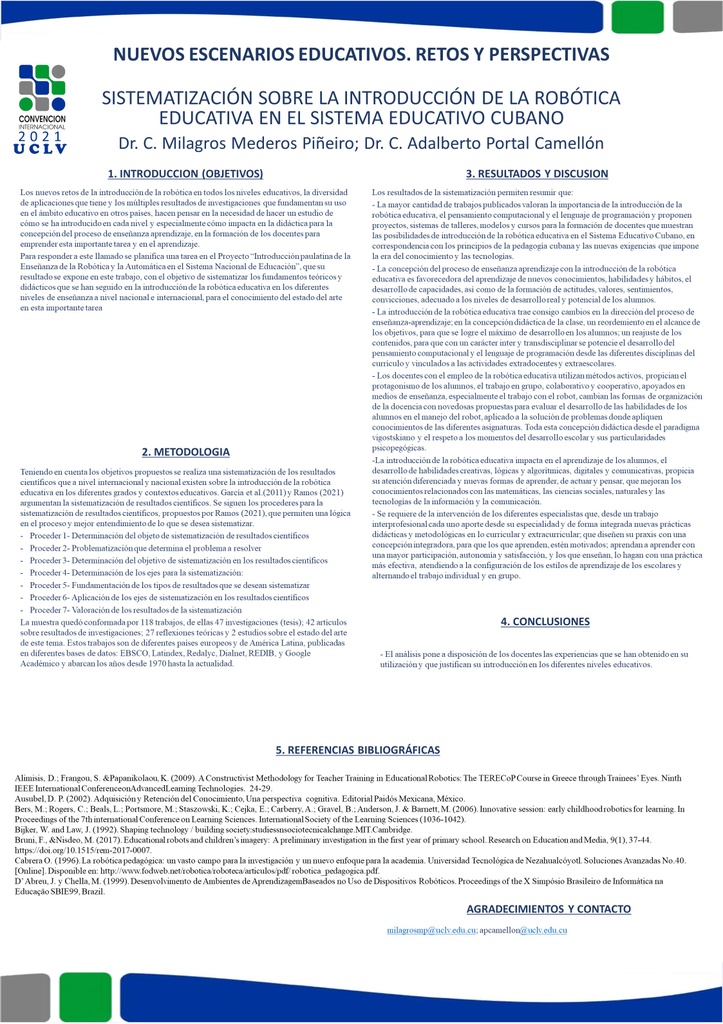Executive Secretary

International Symposium Education for Sustainable Development (ESD) 2021

He present work is the result of a task of the Project "Gradual introduction of the Teaching of Robotics and Automation in the National Education System", has the objective of systematizing the theoretical and didactic foundations of the introduction of educational robotics in the different levels of education nationally and internationally. The systematization methodology was followed with the document analysis method and content analysis techniques, interpretive reading, using systematization axes that were previously determined. As a result, an approach to the state of the art of the use of robotics in the educational system is achieved and it is verified that: there are possibilities of introducing educational robotics at different levels of education, in the training of teachers and other specialties in the university ; that there is an academic debate about the changes it causes in the way of teaching and learning and the challenges it implies for both students and teachers; that it is possible to insert robots in classrooms; that there is a close relationship between educational robotics, the development of computational thinking and the main programming languages; that the use of educational robotics as an object, medium and support for learning is theoretically based with the creation of technological environments and strategies; that the training of teachers is essential, although the didactic approach for the use of educational robotics is very elementary and its use with students with special educational needs (with disabilities and talented) is insufficient.
El presente trabajo es el resultado de una tarea del Proyecto “Introducción paulatina de la Enseñanza de la Robótica y la Automática en el Sistema Nacional de Educación”, tiene el objetivo de sistematizar los fundamentos teóricos y didácticos de la introducción de la robótica educativa en los diferentes niveles de enseñanza a nivel nacional e internacional. Se siguió la metodología de sistematización con el método de análisis de documentos y las técnicas análisis de contenido y lectura interpretativa, utilizando ejes de sistematización que se determinaron previamente. Como resultado se logra un acercamiento al estado del arte del uso de la robótica en el sistema educativo y se constata que: existen posibilidades de introducción de la robótica educativa en los diferentes niveles de enseñanza; la formación de docentes y otras especialidades en la universidad; que hay debate académico por los cambios que provoca en la manera de enseñar y aprender y los desafíos que implica tanto para alumnos como para docentes; que es posible insertar los robots en las aulas; que existe una estrecha relación entre: robótica educativa, desarrollo del pensamiento computacional y el lenguaje de programación; que se fundamenta teóricamente el uso de la robótica educativa como objeto, medio y apoyo al aprendizaje con la creación de ambientes tecnológicos; que es esencial la formación de los docentes, aunque es muy elemental el abordaje de la didáctica para la utilización de la robótica educativa e insuficientemente su uso con alumnos con necesidades educativas especiales (con discapacidad y talentosos).
About The Speaker

Dr. Milagros Mederos Piñeiro







